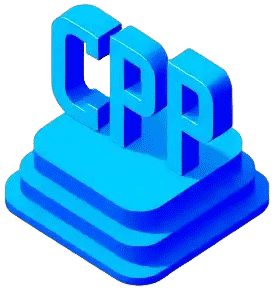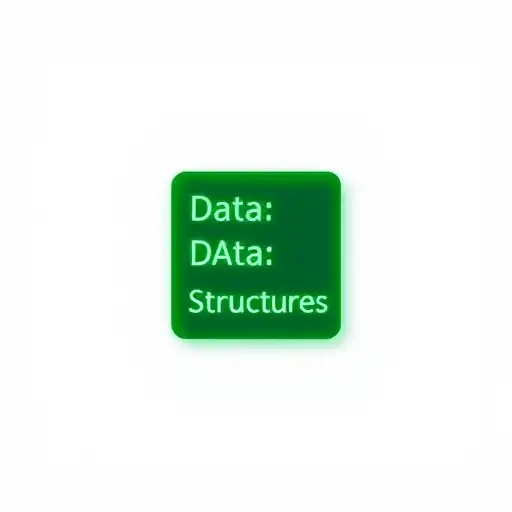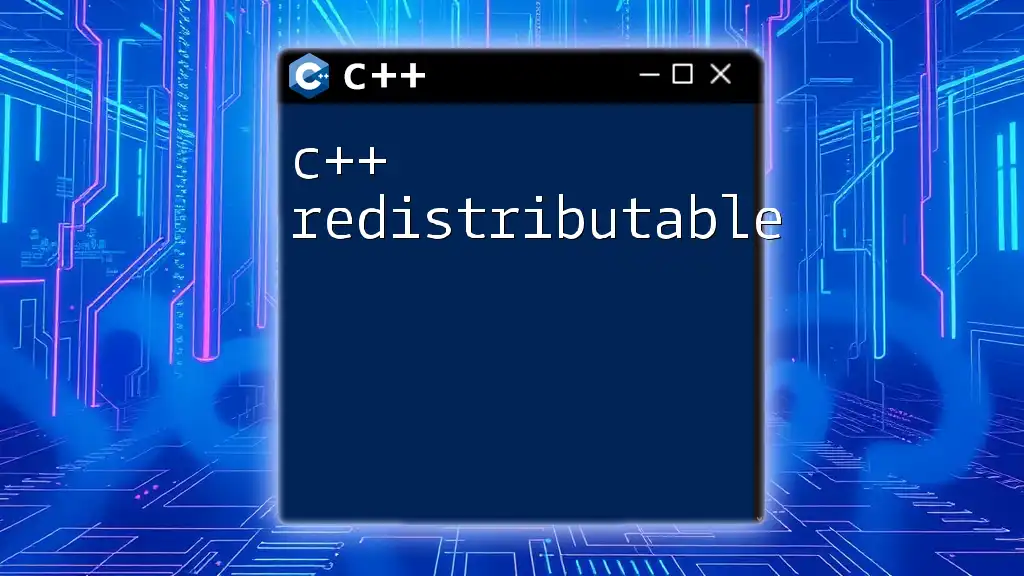"cpp web" refers to utilizing C++ to develop web applications, allowing developers to leverage C++'s performance and system-level control within web environments.
Here’s a simple example of how you might create a basic web server using C++ with the `cpp-httplib` library:
#include <httplib.h>
int main() {
httplib::Server svr;
svr.Get("/", [](const httplib::Request &req, httplib::Response &res) {
res.set_content("Hello, World!", "text/plain");
});
svr.listen("127.0.0.1", 8080);
return 0;
}
Understanding C++ in Web Development
What is C++?
C++ is a powerful, high-performance programming language that was developed as an extension of the C programming language. Designed to provide an efficient and flexible coding experience, C++ has become one of the most widely used programming languages in various fields, including software development, game programming, and web development.
Why Use C++ for Web Development?
One of the primary reasons to opt for C++ in web development is its performance advantages. C++ allows developers to write applications that execute faster and are optimized for resource management due to its low-level capabilities.
Moreover, C++ offers direct control over memory allocation and management, enabling developers to write highly efficient code. Additionally, various robust libraries and frameworks are available to facilitate web programming, making it easier to create and maintain projects.
Getting Started with C++ Web Programming
Setting Up Your Environment
Before diving into C++ web development, you need the right environment. Here’s how you can set it up:
- Compilers: Ensure you have a C++ compiler installed. The commonly used one is g++.
- IDEs: Install an Integrated Development Environment like Visual Studio, Code::Blocks, or CLion to streamline coding and debugging processes.
- Libraries and Frameworks: Install necessary libraries such as Boost, CPPCMS, or Wt based on your chosen framework.
Here’s a simple code snippet to install g++ on a Linux-based system:
sudo apt-get install g++
Basic Syntax and Commands
Understanding the basic syntax of C++ is essential for developing web applications. Below is a demonstration of a simple C++ program:
#include <iostream>
int main() {
std::cout << "Hello, C++ Web Development!" << std::endl;
return 0;
}
This simple program displays a message to the console, providing a foundation for more complex applications.
Frameworks and Libraries for C++ Web Development
Introduction to Web Frameworks
Web frameworks serve as a backbone for application development, providing structure and libraries for developing web applications more efficiently. A good C++ web framework is crucial to expedite development processes and manage functionalities seamlessly.
Popular C++ Web Frameworks
-
CPPCMS
CPPCMS is a web development framework designed to handle fast, dynamic websites. Its feature set includes caching, sessions, and asynchronous input/output. Here’s an example of setting up a basic web server using CPPCMS:
#include <cppcms/application.h> #include <cppcms/service.h> class MyApp : public cppcms::application { public: MyApp(cppcms::service &srv) : cppcms::application(srv) {} void main(std::string uri) { response().out() << "Welcome to CPPCMS!"; } }; int main(int argc, char **argv) { cppcms::service srv(argc, argv); srv.applications_pool().mount(cppcms::create_pool<MyApp>()); srv.run(); return 0; } -
Wt (pronounced "witty")
Wt is a C++ library that enables rapid web development with a focus on performance and GUI-like control. It supports features such as WebSockets, file uploads, and internationalization. Here’s a basic example of creating a simple web application with Wt:
#include <Wt/WApplication.h> #include <Wt/WContainerWidget.h> class HelloWig : public Wt::WApplication { public: HelloWig(const Wt::WEnvironment& env) : Wt::WApplication(env) { setTitle("Hello Wt"); Wt::WContainerWidget *container = new Wt::WContainerWidget(root()); container->addWidget(new Wt::WText("Hello, World!")); } }; Wt::WApplication *createApplication(const Wt::WEnvironment& env) { return new HelloWig(env); } int main(int argc, char **argv) { return Wt::WRun(argc, argv, &createApplication); } -
Crow
Crow is a lightweight C++ micro-framework for web applications that focuses on simplicity and efficiency. It provides REST API functionalities with suggested usage for JSON data. Below is an example of creating a minimalistic REST API using Crow:
#include "crow_all.h" int main() { crow::SimpleApp app; CROW_ROUTE(app, "/")([](){ return "Hello, Crow!"; }); app.port(18080).multithreaded().run(); }
Building a Simple C++ Web Application
Planning the Application
Before coding, it is essential to define the project's purpose and functionalities clearly. Create a project outline with features and determine which framework aligns with your goals.
Step-by-Step Development Process
- Setting Up the Project Structure: Organize files logically, separating source code, assets, and configuration.
- Writing Your First Endpoint: Use your chosen framework to write a simple endpoint that responds to HTTP requests, as shown in the previous examples.
- Connecting to a Database: To offer persistent data storage, connect your application to a database system such as MySQL or SQLite. This allows for fetching and storing information dynamically.
- Testing and Debugging: Utilize debugging tools to identify and fix errors in your code before deploying.
Best Practices for C++ Web Development
Code Efficiency
Writing clean, efficient code is paramount in web development. Focus on avoiding redundant code and implementing best practices to enhance readability. Utilize inline functions and small class definitions to improve performance.
Security Considerations
Security is crucial; ensure to:
- Perform proper input validation to prevent SQL injection and cross-site scripting (XSS).
- Use secure communication protocols, such as HTTPS, to encrypt data transmitted over the network.
- Regularly update libraries to mitigate vulnerabilities.
Integrating C++ with Other Web Technologies
Interfacing with Frontend Languages
C++ applications can effectively communicate with frontend technologies through API calls (typically RESTful). Using JSON, C++ can send and receive data to frontend scripts. Here’s an example of a simple JSON response:
#include "crow_all.h"
int main() {
crow::SimpleApp app;
CROW_ROUTE(app, "/api/data")([]{
return crow::json::wvalue{{"message", "Hello from C++!"}};
});
app.port(18080).multithreaded().run();
}
Using C++ with Databases
Integrating a database involves using a compatible C++ library such as SQLite3 or MySQL Connector/C++. Here’s a simple connection to SQLite:
#include <sqlite3.h>
int main() {
sqlite3 *db;
char *errMsg = 0;
int rc;
rc = sqlite3_open("test.db", &db);
if (rc) {
std::cerr << "Can't open database: " << sqlite3_errmsg(db) << std::endl;
return rc;
}
sqlite3_close(db);
return 0;
}
Debugging and Testing C++ Web Applications
Tools for Debugging
gdb (GNU Debugger) and Valgrind are popular debugging and profiling tools available for C++. They allow you to trace code execution, inspect memory usage, and detect memory leaks while you develop your application.
Writing Tests for Your Application
Unit testing is vital for ensuring your application runs smoothly and correctly. Using testing frameworks like Google Test, you can create unit tests to verify each component of your application. Here’s a simple example:
#include <gtest/gtest.h>
TEST(SampleTest, HandlesPositiveInput) {
ASSERT_EQ(1 + 1, 2);
}
Conclusion
C++ offers a powerful and efficient framework for web development, ensuring high performance and flexibility. By leveraging available frameworks and adhering to best practices, developers can create robust web applications that effectively manage resources while providing user-friendly experiences.
Resources for Further Learning
Explore the vast landscape of C++ web development through documentation, tutorials, and online communities. Consider diving into advanced topics such as asynchronous programming, container management in C++, and real-time web applications for an enriched understanding.








